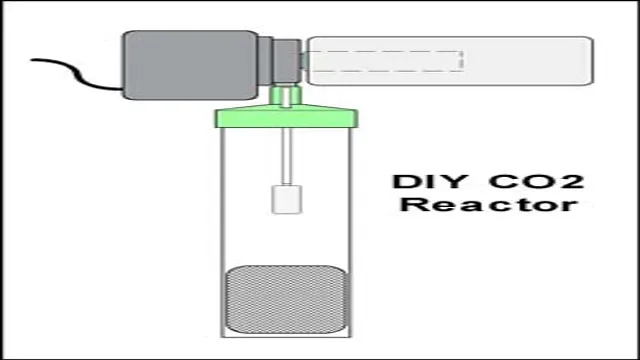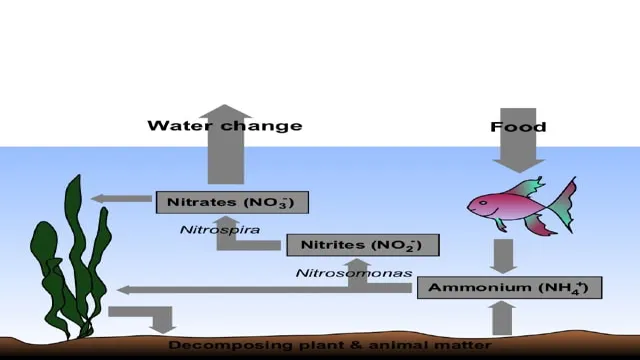If you’re passionate about aquariums, you know that the welfare of your aquatic pets is essential. Manganese is one of the essential nutrients that contribute to their overall health, but it’s often overlooked by aquarium owners due to its rare usage. Manganese is a micronutrient that plays a critical role in photosynthesis and respiration, which means it’s necessary for plants and animals alike.
In aquariums, manganese deficiency may lead to poor plant growth, gradual decline of essential trace elements, and even deformity in some aquatic species. Adding manganese to your aquarium can lead to a healthier and more vibrant environment for your aquatic pets. With proper research and understanding, it’s easy to supplement your aquarium with this essential trace element.
This guide will provide you with a complete understanding of manganese, including why it’s essential for your aquarium, how to add it safely, and potential risks to look out for. We’ll help take the guesswork out of adding manganese to your aquarium, so you can provide your aquatic pets with the care they deserve.
Understanding Manganese and Its Benefits
If you want to add manganese to your aquarium, there are a few things you should know. Manganese is an essential trace element that plays a vital role in many biological processes, including photosynthesis and the production of chlorophyll. However, it can be challenging to add manganese to your aquarium because it is not very soluble in water and is often in short supply.
One option is to add a manganese supplement to your aquarium, but this may not be the most effective solution. Another option is to use a substrate that is rich in manganese, such as laterite. Additionally, you can add manganese-rich foods to your aquarium, such as spinach or kale.
By adding these foods to your aquarium, you can provide your fish with the manganese they need to thrive. Overall, adding manganese to your aquarium can help promote healthy plant growth and ensure that your fish have the nutrients they need to stay healthy.
What is Manganese?
Manganese is a mineral that our body needs in trace amounts to function properly. It plays an essential role in bone health, blood clotting, and the metabolism of carbs, amino acids, and cholesterol. One of the primary benefits of manganese is its antioxidant properties that protect cells from oxidative stress and damage.
Manganese also helps in the production of collagen, an important protein responsible for healthy skin and wound healing. Manganese is found in a variety of food sources such as nuts, seeds, whole grains, leafy greens, and legumes. However, certain factors like cooking, canning, and processing can reduce its availability and absorption in the body.
Therefore, it is essential to consume a diet rich in whole, unprocessed foods to maximize the benefits of manganese. Although manganese is vital for our health, excess intake can lead to health problems such as muscle cramps, joint pain, and tremors. Hence, it is essential to consume manganese in moderation and under the guidance of a healthcare professional.
In conclusion, manganese is essential to our health, but we need to consume it mindfully and in the right amounts to enjoy its numerous benefits without any adverse effects.

Benefits of Adding Manganese to Your Aquarium
If you’re looking to improve the health of your aquarium, adding manganese can be a beneficial solution. This essential trace mineral plays a crucial role in the growth and development of aquatic plants and algae, helping to support a thriving ecosystem within your tank. Manganese aids in photosynthesis, which is essential for the production of oxygen and energy, and also promotes proper enzyme activity in fish and other aquatic life.
Additionally, manganese can help prevent the growth of harmful bacteria and aid in the removal of toxins from your aquarium. Overall, incorporating manganese into your aquarium routine can help ensure a healthy and vibrant environment for all inhabitants.
Testing Your Water for Manganese
If you’re experiencing low levels of manganese in your aquarium, it’s important to first test your water to determine just how low those levels are. Testing kits can be purchased at most pet stores or online. Once you’ve determined the manganese deficiency in your water, it’s time to add it.
One way to add manganese to your aquarium is by using a manganese supplement or fertilizer. It’s important to note that too much manganese can be harmful, so be sure to follow the instructions on the supplement carefully and test the water regularly to maintain proper levels. Another option is to add natural sources of manganese, such as driftwood or leaf litter, to your aquarium.
These sources can release manganese slowly over time, providing a more natural solution to a manganese deficiency. By properly testing and adding manganese to your aquarium, you can help promote the growth and health of your aquatic plants and ensure a thriving ecosystem for your fish. (See Also: How to Get to London Aquarium from Victoria Station: A Quick Guide to Hassle-Free Travel.)
Why Test for Manganese?
If you are concerned about the quality of your drinking water, testing for manganese can alert you to any potential health risks. Manganese is a naturally occurring mineral found in rocks, soil, and water, and in small amounts, it is necessary for good health. However, when levels are too high, it can be harmful, especially for infants and young children.
Long-term exposure to high levels of manganese has been linked to neurological problems like Parkinson’s disease, so it’s important to monitor levels in your water supply regularly. Testing your water for manganese is a simple and effective way to ensure that you and your family are not exposed to potentially harmful levels of this mineral. By taking proactive steps to monitor your water quality and address any issues that arise, you can protect your health and well-being for years to come.
How to Test Your Water for Manganese
Manganese is a naturally occurring mineral that can be found in certain types of rocks and soils. It is also often present in drinking water, and high levels of manganese can have negative effects on human health. If you are concerned about the presence of manganese in your drinking water, there are several ways that you can test for it.
The most common method is to purchase a test kit that is specifically designed to detect manganese in water. These kits typically use a chemical reaction to determine the presence and concentration of manganese in your water. Another option is to send a water sample to a laboratory for testing.
This may be a more accurate method, but it can also be more expensive and time-consuming. Regardless of which method you choose, testing your water for manganese is an important step in ensuring the safety and quality of your drinking water.
Methods for Adding Manganese to Your Aquarium
If you’re looking to add manganese to your aquarium, there are a few different methods you can try. One way is to use a water conditioner that includes trace elements, including manganese. You can also add a liquid manganese supplement directly to your tank, although you’ll need to be careful to dose it properly and avoid overdosing.
If you prefer a more natural approach, adding manganese-rich rocks or substrate to your aquarium can help increase levels of this important mineral. Just be sure to do your research and choose rocks or substrate that are safe for your aquarium and compatible with your fish and plants. Another option is to add certain types of aquatic plants, such as water hyacinths and water lettuce, which are known to absorb manganese from the water.
By experimenting with these different methods, you can find the best way to increase manganese levels in your aquarium for healthier, happier fish and plants.
Method 1: Use Manganese Supplements
One way to add manganese to your aquarium is by using supplements. Manganese is an important trace element that plays a crucial role in the growth and development of aquatic plants. Without adequate amounts of manganese, plants can develop deficiencies and struggle to thrive.
Fortunately, manganese supplements are widely available and can be easily added to your aquarium. One popular form of manganese supplement is manganese dioxide, which can be added directly to the water or mixed with substrate. Another option is to use a liquid manganese supplement, which can be added directly to the water column.
Just be sure to follow the manufacturer’s instructions carefully to avoid over-dosing your aquarium. By using manganese supplements, you can provide your aquatic plants with the nutrients they need to grow strong and healthy. So, if you want to maintain a thriving and beautiful aquarium, don’t forget to include manganese in your fertilization routine.
Method 2: Add Manganese-Rich Substrates
Manganese-Rich Substrates Another method to add manganese to your aquarium is by using manganese-rich substrates. These substrates are designed to release manganese slowly over time, providing a constant source for your aquatic plants. By using these substrates, you can improve the health and growth of your plants, which in turn benefits your fish.
There are several types of manganese-rich substrates to choose from, including clay, laterite, and iron-rich substrates. Each of these substrates has different properties and benefits, so it’s important to choose the one that best fits your aquarium’s needs. Clay substrates are great for buffering pH and absorbing impurities while laterite is rich in nutrients for plant growth. (See Also: How to Blackout Back of Aquarium: Tips and Tricks for a Dark and Beautiful Tank)
Iron-rich substrates are ideal for creating a lush and dense substrate carpet in your aquarium. Incorporating manganese-rich substrates into your aquarium can provide long-lasting benefits for your aquatic ecosystem.
Method 3: Use Manganese-Based Filtration Media
Manganese-based filtration media is a great method for adding manganese to your aquarium. This type of media is specifically designed to remove manganese from the water as it passes through the filter, ensuring that it is present in the water at safe and healthy levels. This is an ideal solution for aquarium owners who may not have access to other methods of adding manganese to their aquarium, or who simply want a more low-maintenance solution.
However, it’s important to keep in mind that not all filtration media is created equal, and it’s important to choose a high-quality product from a trusted brand to ensure that it is effective and safe for your aquarium. With proper use and maintenance, manganese-based filtration media can be a great way to keep your aquarium healthy and thriving.
Maintaining Optimal Manganese Levels in Your Aquarium
If you have an aquarium, it’s essential to maintain optimal levels of manganese to keep your aquatic life healthy. Manganese assists in the formation of strong bones, aids in enzyme function, and supports a healthy nervous system. One way to add manganese to your aquarium is to use a manganese-based fertilizer.
Manganese can also be found in some fish food, but it’s important not to rely entirely on this source as the levels may not be sufficient. Testing your water regularly for manganese levels is crucial, as a deficiency or excess can harm your fish and other aquatic inhabitants. Additionally, keep in mind that while manganese is beneficial to your aquarium, too much can lead to toxicity.
Therefore, it’s important to maintain a balance and monitor levels to ensure your aquarium remains a safe and healthy environment for all its inhabitants.
Monitoring Manganese Levels
Maintaining optimal manganese levels in your aquarium is crucial for the health and wellbeing of your aquatic pets. Manganese is an essential trace element that supports various metabolic functions in your aquarium, including photosynthesis, respiration, and nitrogen fixation. Low manganese levels can lead to stunted growth, poor reproduction, and weakened immune systems in your fish.
On the other hand, high levels of manganese can be toxic and cause gill damage, fin rot, and other health problems in your pets. To monitor manganese levels, you can test the water regularly and adjust the dosage of manganese supplements accordingly. It’s also important to maintain a balanced and healthy aquarium environment with proper filtration and water changes.
By keeping manganese levels in check, you can ensure a happy and healthy aquatic community that thrives in its environment.
Regular Water Changes
Maintaining optimal manganese levels in your aquarium is crucial for the health of your aquatic pets. Manganese plays a vital role in various biological processes, including the photosynthesis of plants, enzyme synthesis, and oxygen production. Therefore, if the manganese levels in your aquarium are not within the appropriate range, it can negatively affect the health of your fish, plants, and other aquatic organisms.
One of the best ways to ensure that manganese levels are optimal in your aquarium is by conducting regular water changes. Changing a percentage of your aquarium water frequently can help eliminate any excess manganese, which may have accumulated over time. Aim to change at least 25% of your aquarium water every two to four weeks, depending on the size and bioload of your tank.
Regular water changes also help dilute any other harmful substances and replenish essential minerals that are necessary for the survival of your aquarium inhabitants. Remember that a healthy aquarium requires constant care and attention, but with the right procedures, you can maintain optimal manganese levels and keep your aquatic pets happy and healthy.
Adjusting Your Manganese Dosage
If you’re looking to maintain optimal manganese levels in your aquarium, it’s important to adjust your dosage appropriately. Manganese is an essential micronutrient that helps regulate various biological processes in your aquarium, from photosynthesis to respiration. However, too much or too little manganese can be detrimental to your aquatic ecosystem.
To ensure that you’re providing the right amount of manganese, consider testing your water regularly and adjusting your dosage accordingly. You can add manganese supplements to your aquarium water or use a substrate that contains manganese. Keep in mind that manganese levels can also be influenced by pH, temperature, and other factors, so be sure to monitor your water conditions closely. (See Also: How to Clean White Aquarium Rocks and Keep Them Sparkling Clean)
By staying on top of your manganese levels, you’ll be able to promote a healthy and thriving aquatic environment.
Conclusion
In conclusion, adding manganese to your aquarium may seem like a daunting task, but with a few simple steps and a little bit of patience, you can ensure that your aquatic pets are getting the nutrients they need to thrive. Just remember to test your water regularly, dose according to the manufacturer’s instructions, and keep a watchful eye on the health of your fish and plants. With a bit of knowledge and preparation, you’ll be able to strike the perfect balance of manganese and other essential minerals in your aquarium, and your underwater friends will thank you for it.
Now go forth and manganese on!”
FAQs
Why is adding manganese to an aquarium important?
Manganese is essential for the growth and health of aquatic plants, and its deficiency can lead to stunted growth and poor overall health.
How can I test for manganese levels in my aquarium?
You can purchase a manganese testing kit from a pet store or online retailer. Follow the instructions carefully to get an accurate reading of the manganese levels in your aquarium.
What are some natural sources of manganese for an aquarium?
Some types of fish food, such as shrimp and krill, contain trace amounts of manganese. You can also add certain types of rocks and minerals to the aquarium, such as manganese oxide, to increase manganese levels naturally.
Can a high level of manganese be harmful to aquatic life?
Yes, high levels of manganese can be toxic to fish and cause health problems. It’s important to maintain a balanced level of manganese in the aquarium, and not to over-supplement.
How often should I add manganese to my aquarium?
The frequency of manganese supplementation will depend on the specific needs of your aquatic plants and the current manganese levels in your aquarium. It’s best to test manganese levels regularly and adjust supplementation as needed.
Can I use supplements other than manganese to promote plant growth in my aquarium?
Yes, there are a variety of plant supplements available that can promote healthy growth in aquatic plants. These may include iron, potassium, and other micronutrients.
What are some signs of a manganese deficiency in aquatic plants?
Signs of manganese deficiency may include yellowing or stunted growth of leaves, or the plants may develop brown or black spots. If you notice these signs, it may be time to supplement with manganese.







